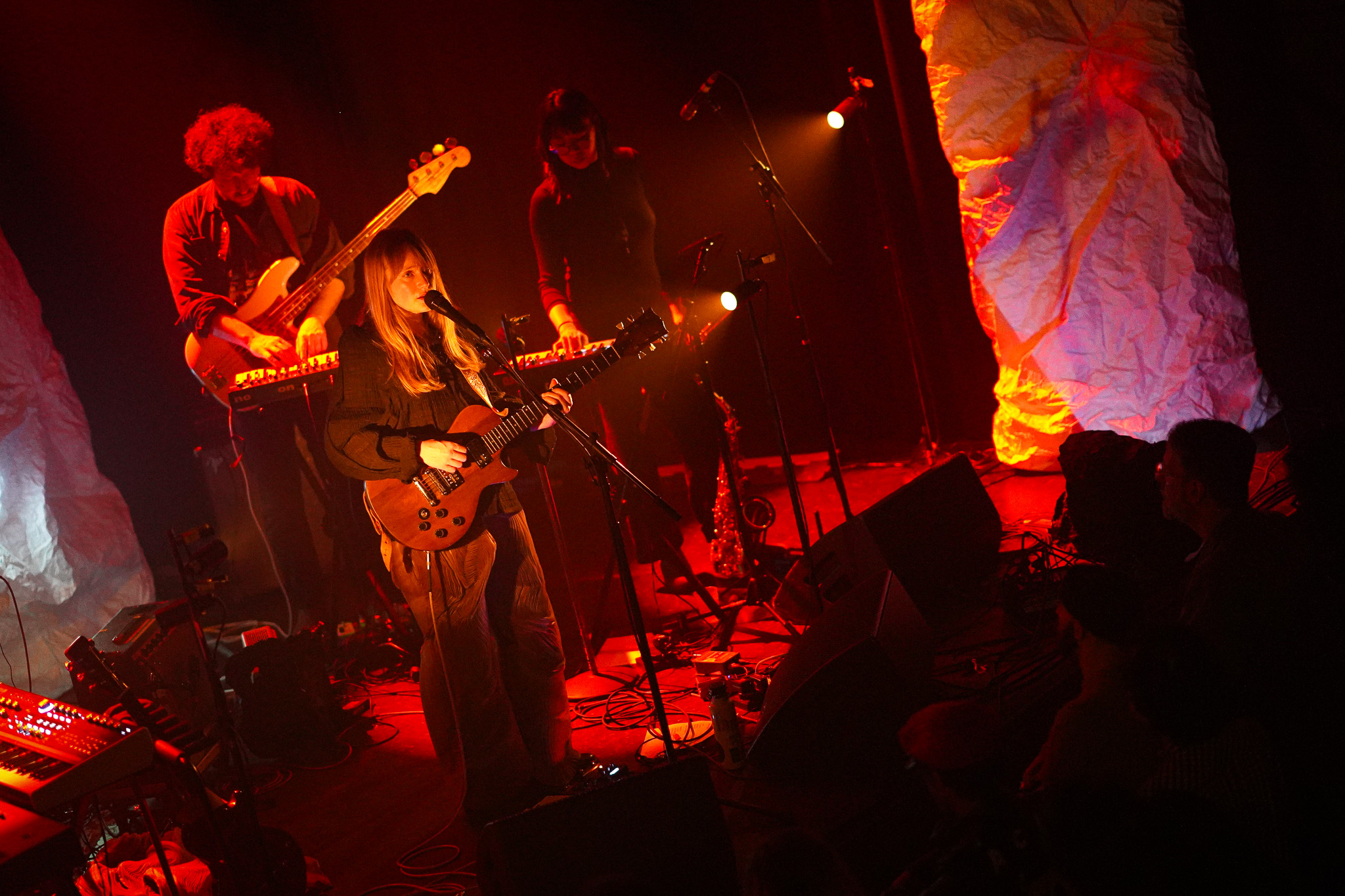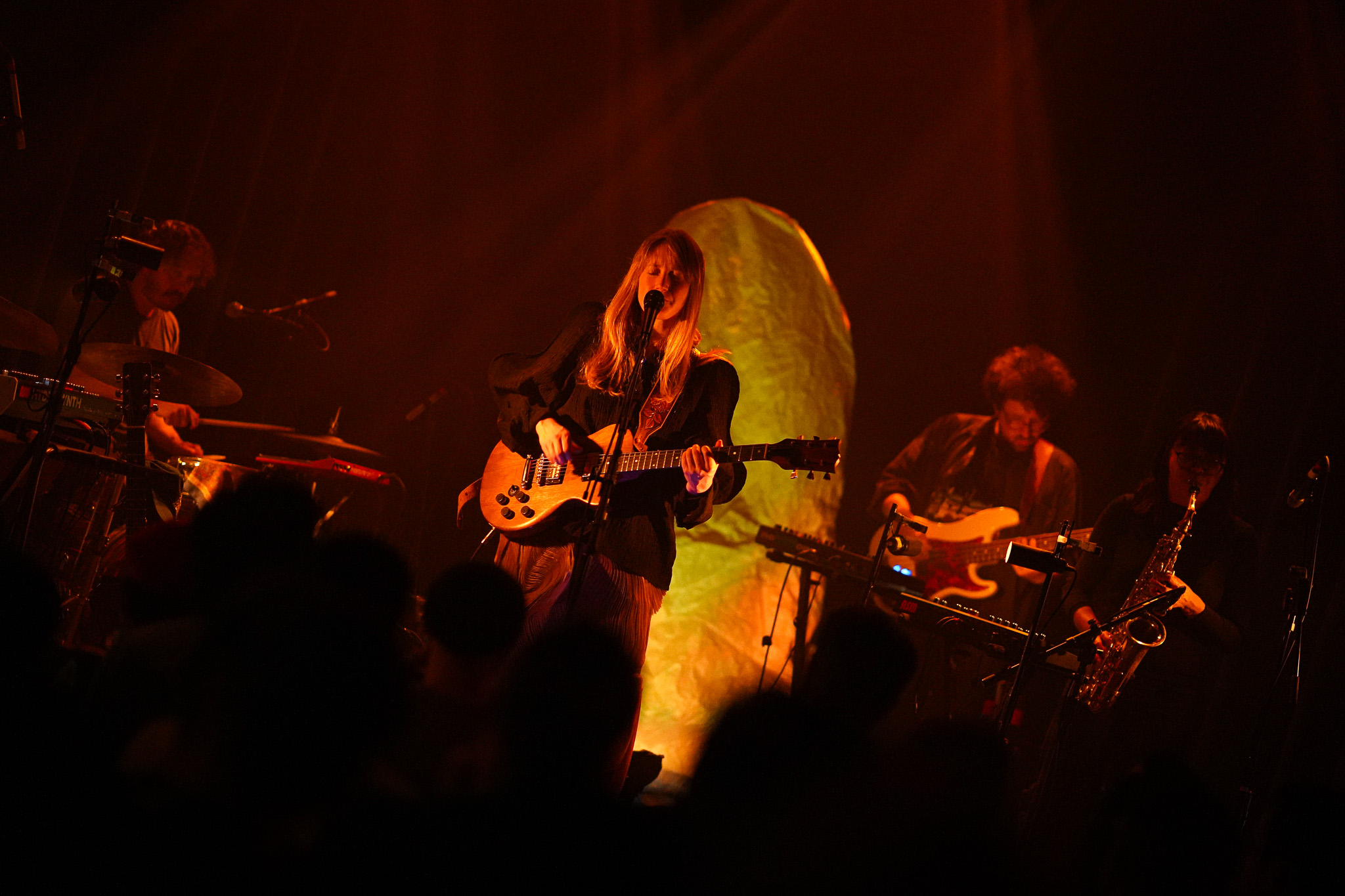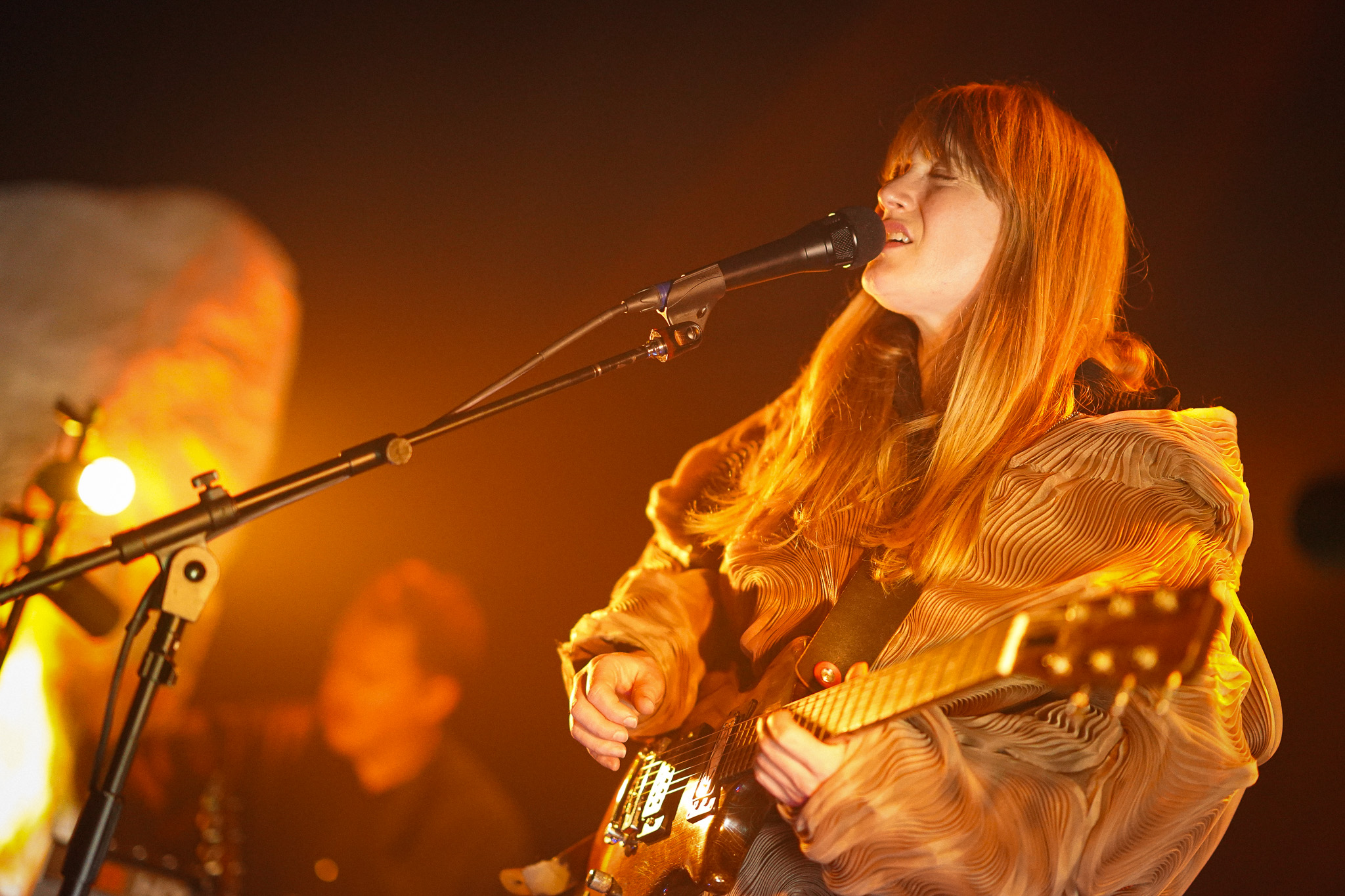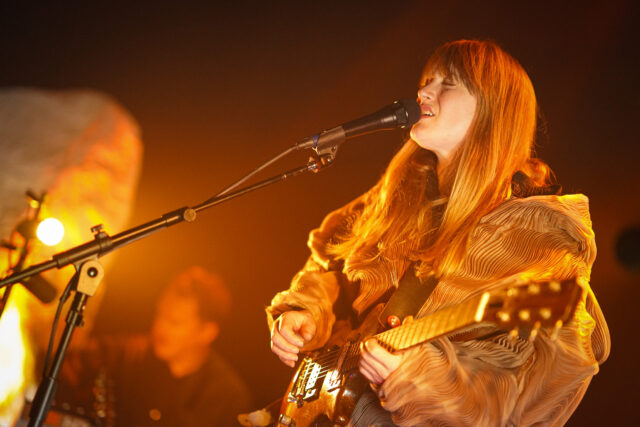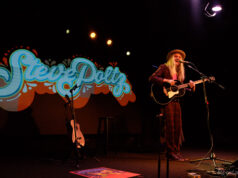The Weather Station, the project helmed by Canadian singer-songwriter Tamara Lindeman, has evolved over its life. Lindeman’s early recordings were spare, rootsy folk, mostly acoustic and made with traditional instrumentation. In more recent albums, beginning with her 2021 critical and commercial breakthrough, Ignorance she’s incorporated jazz. While the next year’s follow-up, How Is It That I Should Look At The Stars, returned to a more intimate, acoustic format, she pushed herself even further on this year’s Humanhood, embracing electronica. Her sonic palette has grown more varied and sophisticated, and her lyrics increasingly sharp and incisive.
In their recent show at the Atlantis, the Weather Station showed just how much its evolved in an engaging, smart set.
A consistent critical darling, the Weather Station’s music has earned comparisons to Canadian precursors Joni Mitchell and Leonard as well as sophisticated contemporary singer-songwriters like Bill Callahan. While she has her own unique lyrical footprint, the way she’s expanded the range of her sound does resemble the way Mitchell’s music became increasingly adventurous and experimental.
Along with the growth in her music, Lindeman has embraced a more complex, nuanced, and one might even say theatrical mode of presenting her work in a live setting. At The Atlantis on April 5, the set was divided into three roughly equal segments (six, seven, and six songs), by theme, and it was punctuated by spoken word recordings that served as transitions between songs. The first segment, tackling “disconnection,” consisted of the instrumental “Descent,” followed by “Wear,” “Mirror,” “Neon Signs,” “Robber,” and “Irreversible Damage.” She dedicated that last one to “the man in the big house down the street,” noting the large protest in the city earlier in the day.
Watch the official music video for “Neon Signs” by The Weather Station on YouTube:
In an interesting move, Lindeman closed the second segment with the same song, after playing “Loss,” “Atlantic,” “Window,” “Passage,” “Body Moves,” and “Lonely.” Aside from some banter between the first and second segments, Tamara opted not to say a lot during her set, which allowed her to get through 20 songs (including her encore, “Sewing”) in an hour and change. The third segment of the show included “Ribbon,” “Fleuve,” “Aurora,” the title track from Humanhood, “Tried To Tell You,” and “Parking Lot.”
Fellow Canadian Sister Ray (clearly lifting the name from the song by the Velvet Underground) opened the show with an engaging set mixing acoustic and electric numbers. She didn’t take herself too seriously, even poking fun at her somber appearance. She kicked it off with “Jackie In The Kitchen.” Another song “about going to a bar with a friend” explored her regret over downing five beers instead of stopping at two. A fair amount of her material tackled relationships, like “Wings,” a song about a date she had while she was on tour for a month in Europe. “I’ve milked that 24 hours for all I can,” she said. She also played the title track of her new album — which just came out yesterday — Believer, about a guy who was really into conspiracy theories. (I only believe in harmless, silly conspiracy theories, like that Little Steven Van Zant is the Baba Yaga, and that T Bone Burnett is a member of ancient race of hill giants.) She finished with a bit of a surprise, covering AC/DC’s “Up To My Neck In You.”
Watch Sister Ray play “Believer” live for Flood magazine on YouTube:
That Sister Ray would cover a Bon Scott tune says something about the essence of this show. Both she and The Weather Station may be singer-songwriters with a background in folk, but their influences go for beyond that world. While they certainly carry on the tradition of lyrical excellence, the sounds here are as important as the words, adding a powerful emotional punch.
Here are some photos of The Weather Station performing at The Atlantis on April 5, 2025. All pictures copyright and courtesy of Casey Vock.
